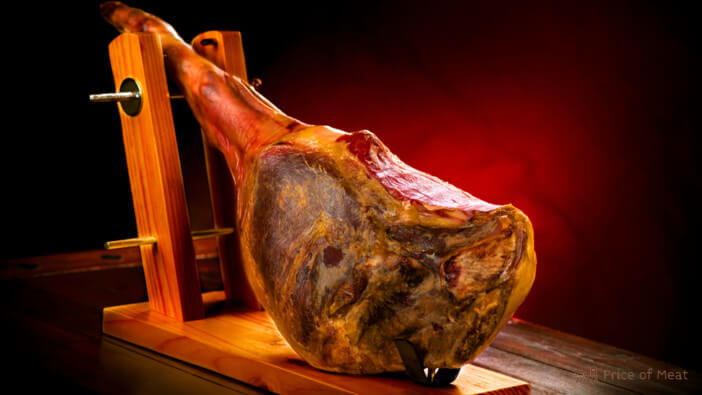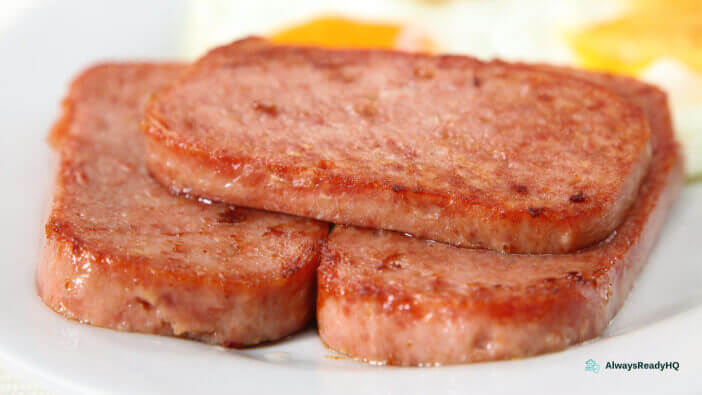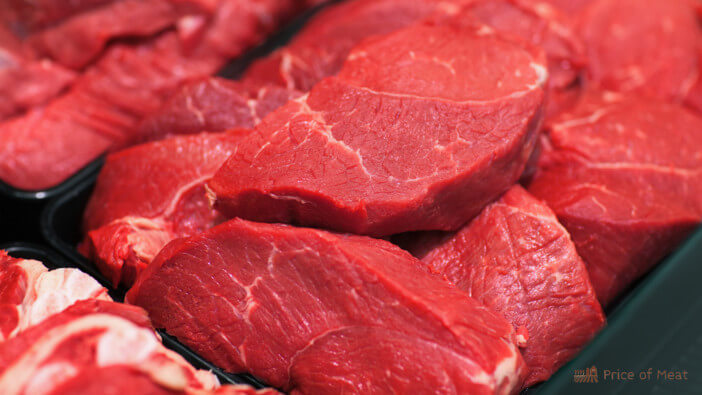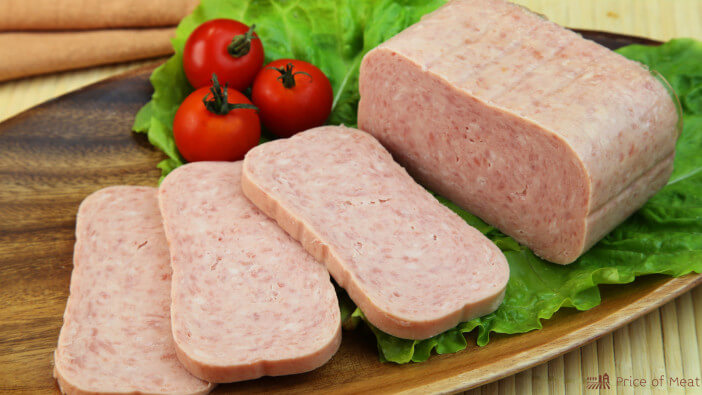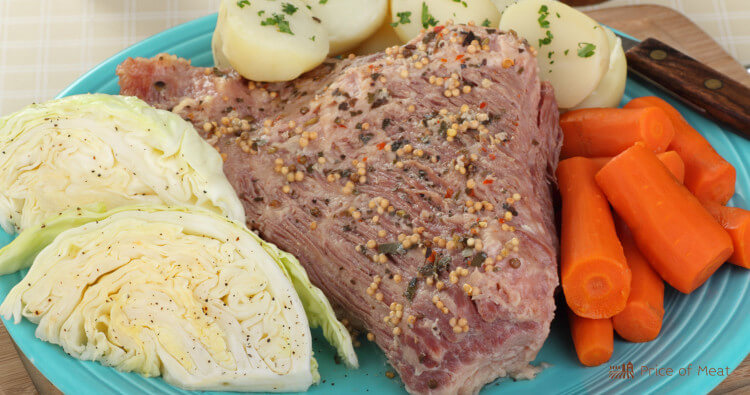What is Uncured Pepperoni? Natural Ingredients & Usage Tips
Uncured pepperoni uses natural preservatives like sea salt and celery powder, offering a saltier taste and paler color than cured pepperoni.

So what is uncured pepperoni? Uncured pepperoni does not contain any artificial preservatives. Instead, the curing process uses natural preservatives, including organic sea salt, celery powder and juice, and beet extract.
Since they’re still full of nitrates, the natural curing agents still create the pepperoni you know and love. But the finished product often tastes a bit saltier and looks paler in color.
Although it largely looks and tastes the same, there are some surprising things you should know about making, using, and storing uncured pepperoni.
Disclosure: As an Amazon Associate, this site earns from qualifying purchases. Thank you!
How Uncured Pepperoni is Made
Uncured pepperoni is made almost the exact same way as cured pepperoni. The main difference is that the curing process uses natural preservatives instead of artificial ones.
Otherwise, the uncured meat goes through the same traditional drying and fermenting process as cured pepperoni.
Both uncured and cured pepperoni recipes usually start with ground pork and beef in a 2 to 1 ratio. Pork alone works well, although it’s usually just the dark meat sections with a higher saturated fat content.
Pepperoni made from 100% beef, turkey, and even venison exists, too, but they’re usually labeled as such.
No matter what type of meat gets used, the ground mixture should have a fat content of around 30% to create the right flavor and texture. A variety of tasty spices get added to the meat, including paprika, cayenne pepper, anise seed, garlic, and sugar, to further elevate the rich flavor profile.
To make uncured pepperoni, the natural preservatives go in next, like sea salt, beet extract, and celery powder and juice. Cured pepperoni would also get nitrates and other artificial substances to increase their shelf life and brighten the pinkish hue.
To facilitate the curing process, it’s necessary to use at least 27 grams of salt for each kilogram of meat. Without nitrates and other artificial preservatives, the salt to meat ratio increases, creating a saltier finish overall.
The meat, spice, and preservative mixture gets pushed into casings, and then fermented and dry aged until done. The initial fermentation process occurs in a very humid location kept at around room temperature.
After several days, the pepperoni gets smoked and hangs to dry until it loses 30% of its original weight.
Natural Preservatives Used in Uncured Pepperoni
Uncured pepperoni uses natural preservatives to aid in the curing process, creating a final product with just the right flavor and texture.
The natural preservatives also help the final product stay shelf-stable long enough for the consumer to enjoy their sausages.
The natural nitrates are not quite as powerful when it comes to elevating the pepperoni’s color, however.
Oftentimes, you’ll see uncured pepperoni labeled with, “No nitrates or nitrites added,” but that’s simply not true. Many vegetables, herbs, and other plants are high in natural nitrates.
The plants absorb the nitrates from the soil, making them an excellent substitute for their artificial counterparts.
The most common natural preservatives used in pepperoni include:
- Beet extract
- Celery juice and powder
- Organic sea salt
Every food manufacturer uses their own proprietary ratio of preservatives to create their products. They figure out the exact amounts by scoring the quality of the final product based on appearance, taste, and texture.
The overall shelf stability of the product comes into play, too, so they can get the most value out of every batch.
Artificial Preservatives Used in Cured Pepperoni

Cured pepperoni contains artificial preservatives, like nitrates and nitrites, which enhance the preserved meat’s color and flavor. The addition of these preservatives also helps block the growth cycle of botulism-causing bacteria.
Made using a sodium or potassium base, nitrates and nitrites get used interchangeably quite often.
In fact, in the past, it was thought that nitrates did all the work in enhancing the color, flavor, and shelf stability of the preserved meats. But it actually turned out that nitrites are doing much of the heavy lifting.
Although artificial preservatives might seem like a modern invention, they’ve actually been used to preserve meat for hundreds of years. In the past few years, however, pushback against nitrates has resulted in the use of natural preservatives instead.
The concerns arose as the World Trade Organization released a report stating that the consumption of processed meat is carcinogenic. They named nitrates in their report, unintentionally creating the belief that artificial preservatives were the cause.
The truth of the matter is that both artificial and natural preservatives can adversely affect your health. It all comes down to the amount and frequency of your consumption of those products.
Moderation is key, after all. The U.S Department of Agriculture plans to revisit its food labeling rules as a result.
At that time, they will look at whether to ban the terms, “No nitrates or sodium nitrite added” and “Uncured,” on products with natural preservatives.
Their decision to review their labeling rules comes about from a petition stating that the misleading statements make people think uncured meats are healthier than their traditionally cured counterparts.
How to Use and Store Uncured Pepperoni
With moderation, there’s no difference between uncured and cured pepperoni health-wise. The major difference comes down to how you should use and store the uncured meats.
Usage
Since uncured pepperoni uses salt as its main preservative, it’s not surprisingly much saltier than cured pepperoni. So, it’s wise to adjust your salt usage accordingly when using the uncured meats in your recipes.
If you’re making pizza, for example, then go with a lower sodium sauce or add more veggies to balance out the relatively high sodium levels. Alternatively, balance the saltiness of your uncured pepperoni pizza by adding a light drizzle of olive oil over the top before serving.
Either way, make sure to pay attention to how much pepperoni you add as well. That way, you can adjust the recipe later if you don’t like how it turns out.
Storage
In general, dry sausage, like pepperoni, can stay unopened in the fridge indefinitely. If you want to keep it in the pantry, then it’ll stay good for about six weeks. Once you open your pepperoni, pop it in the fridge, and then use it in about three weeks.
Without the artificial curing agents, uncured pepperoni will start to lose its color pretty quickly after opening the package. Although it doesn’t change the flavor much, the loss of color can make the product unpalatable.
So, plan to use your uncured meats much faster than cured ones to enjoy your snacks to the fullest. Be sure to also explore other Italian sausages like mortadella, salami (and the best on sandwiches), soppressata (a salami variation), and bologna (the best brands)!
FAQs about Uncured Pepperoni
Here are some common questions about uncured pepperoni.
Is uncured pepperoni healthier?
Despite public perception, uncured pepperoni is not healthier than traditionally cured varieties. Uncured pepperoni still contains the carcinogenic preservatives found in cured meats.
The preservatives in uncured meats just come from natural sources, like celery juice and beet extract. Processed meats with either natural or artificial preservatives are best consumed in moderation.
Be sure to also see our post on vegan pepperoni options!
Can uncured pepperoni make you sick?
When stored properly, uncured pepperoni is not likely to make you sick. The uncured varieties are just as safe to eat as cured pepperoni.
Both types of pepperoni can cause food poisoning, however, especially if left unrefrigerated after opening. Cooking pepperoni reduces the risk of food poisoning but does not completely eliminate it.
Is all pepperoni precooked?
Traditionally, pepperoni is dry-cured, not cooked. The meat, spice, and preservative mixture goes through a fermenting and drying process instead.
The process typically uses artificial preservatives, although natural ones work, too. Either way, the preserved meat is safe to eat as is or you can cook it before eating.
Does uncured pepperoni taste different?
Uncured pepperoni typically has a saltier flavor than traditionally cured pepperoni does. The flavor change occurs due to the use of natural preservatives, like organic sea salt, celery juice and powder, and beet extract.
The spice mixture put in the pepperoni, including garlic, cayenne pepper, and anise seed, still produces its iconic flavor profile, however.
What’s the difference between uncured pepperoni and cured?
The difference between uncured pepperoni and cured comes down to the preservatives used in the mix. Cured pepperoni uses artificial preservatives, including nitrates and nitrites, to create a shelf-stable product.
Uncured pepperoni switches to natural alternatives, like celery powder and juice, beet extract, and organic sea salt.
What is the difference between uncured pepperoni and regular pepperoni?
Uncured pepperoni uses natural preservatives. Regular pepperoni uses the traditional artificial preservatives. The natural preservatives create a slightly saltier taste and a lighter pink color overall.
Artificial preservatives increase the shelf stability of the pepperoni while adding to its classic pinkish hue.
What is uncured pepperoni?
Uncured pepperoni is pepperoni that has not been preserved using any unnatural or synthetic forms of nitrates or nitrites. Instead, it relies on natural salts and flavorings for preservation, avoiding the use of synthetic chemicals. This allows the pepperoni to maintain a simpler and more natural composition.
What’s the difference between pepperoni and uncured pepperoni?
Pepperoni and uncured pepperoni have a distinction in terms of the preservation process. Cured pepperoni utilizes artificial preservatives, whereas uncured pepperoni relies on natural preservatives. Additionally, cured pepperoni typically has a lengthier shelf life compared to its uncured counterpart.
Does uncured meat taste different?
Uncured meat does taste different. It is cooked and has a similar taste to cured meats. Instead of using artificial preservatives, uncured meats use natural preservatives like celery powder, which converts into nitrite during processing. This is why uncured products are labeled as “No Nitrates or Nitrites added except those naturally in celery powder or juice”. However, it is important to note that uncured meats have a shorter shelf life compared to cured meats.
Does uncured pepperoni have pork?
Uncured pepperoni made from select pork and beef cuts, mixed with carefully sourced spices, is 100% natural (minimally processed, with no artificial ingredients).
Does uncured mean uncooked?
Uncured does not mean uncooked. Instead, it means that the meat did not undergo the typical curing process. So, it can be either fresh ham, which is completely uncooked, or it has been cured using an alternative method. This can be confusing because uncured ham is prepared in the same way as cured ham, but it lacks the brining or flavoring found in bacon or prosciutto.
Is there a healthy pepperoni?
There is a healthy pepperoni option called turkey pepperoni. It is made from turkey instead of beef or pork, resulting in lower calories, sodium, and fat content. Additionally, turkey pepperoni contains less MSG and nitrates compared to regular pepperoni.
Is uncured pepperoni healthy?
Uncured pepperoni is not considered healthy because it still contains nitrates and nitrites, which offer little health benefit compared to cured meats.
Is uncured pepperoni better than cured?
Uncured pepperoni is often considered to be healthier than cured pepperoni due to certain health concerns. However, the debate surrounding this topic remains inconclusive as there is currently no scientific evidence to definitively prove that cured meats are detrimental to one’s health.
How long does uncured pepperoni last in the fridge?
Uncured pepperoni can last in the fridge for up to 3 weeks after opening, while unopened and whole, it can be stored indefinitely in the refrigerator or up to 6 weeks in the pantry.
How long can uncured pepperoni sit out?
Uncured pepperoni should not be left out for more than two hours, as any food left unrefrigerated for longer than that poses a higher risk of causing food-borne illness. The USDA advises against consuming any pepperoni that has been unrefrigerated for more than two hours.
Is uncured pepperoni considered processed?
Uncured pepperoni, although made without artificial nitrates or nitrites, is still classified as processed meat.
Can you eat dry cured pepperoni without cooking?
Dry-cured pepperoni can be consumed without cooking as it is entirely safe to eat, even though it has not been subjected to heat treatment.
Can you get pepperoni without nitrates?
Pepperoni without nitrates can be obtained by choosing Foustman’s Salami Pork and Beef Pepperoni. These 8 oz sticks are naturally cured and nitrate-free, making them suitable for individuals following a gluten-free and dairy-free diet.
Is Hormel pepperoni cured or uncured?
Hormel pepperoni is uncured, making it a great option for those who appreciate the delicious taste of 100 percent natural, minimally processed, and free from artificial ingredients pepperoni. All trademarks, logos, and images are the property of Hormel Foods Corporation, its subsidiaries, and affiliates.
What color is uncured pepperoni?
Uncured pepperoni has a deep red color derived from paprika, offering all the smoky, spicy flavors desired, while being completely natural and boasting a lively tang.

